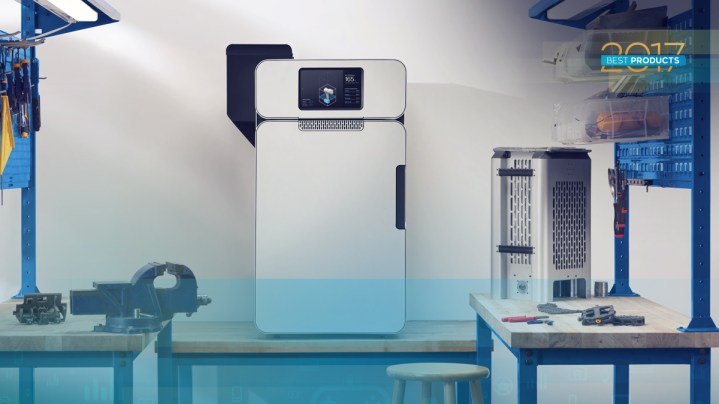
Every year, Digital Trends editors hand pick the most exciting products we’ve had the privilege of handling this year. Make sure to check out award winners in categories from cars to computers, plus the overall best product of 2017! Read on for the emerging tech products that floored us this year.
Winner
Formlabs Fuse 1
Truth be told, you’re probably never going to use this 3D printer. Hell, there’s a good chance you’ll probably never even lay eyes on it. Though it may not show up under your Christmas tree this year, the Fuse 1 has some pretty massive implications for the future of 3D printing, which is why we’re giving it our product of the year award for Emerging Technology.
So what exactly is this thing? Simply put, it’s a 3D printer that uses a technology called selective laser sintering (SLS) to create parts. SLS printing works very differently than the filament- and resin-based printers you’ve probably seen before. To create an object, an SLS machine flashes a laser over a bed of superfine powder, fusing the particles together to form a thin, solidified layer. The machine then sweeps more powder over the top of that finished layer, and repeats the process until the object is complete.
SLS printing has a number of big advantages — but arguably the most significant is that objects printed with the Fuse 1 are actually durable and detailed enough to be sold as end-use parts. That’s what makes this technology so special. Whereas FDM and SLA printers are good for prototyping, SLS printers can make objects that are nearly as good as parts created through injection molding, milling, and other traditional manufacturing processes. In other words, they can make high-quality stuff that’s ready to use (and even be sold) straight out of the printer.
SLS printers can make high-quality stuff that’s ready to use (and even be sold) straight out of the printer.
But believe it or not, SLS tech isn’t what makes the Fuse 1 so revolutionary. The most groundbreaking part is that it only costs $10,000. Now, that might sound like a lot of money, but before Fuse 1 came along, even the cheapest SLS printers generally cost upward of $100,000 — meaning they were generally out of reach for hobbyists and small-scale manufacturing operations. The Fuse 1 changes that, and finally brings this technology down to a more approachable level.
This is a big deal because it means that instead of outsourcing manufacturing to a giant factory in Shenzhen, a startup could ostensibly just buy a fleet of Fuse 1 printers and use them to produce all prototypes and end-use parts in-house. So while you probably won’t see one in your workshop anytime soon, there’s a chance your next Kickstarter purchase might be produced with one.
Read more on the Formlabs Fuse 1
See it




